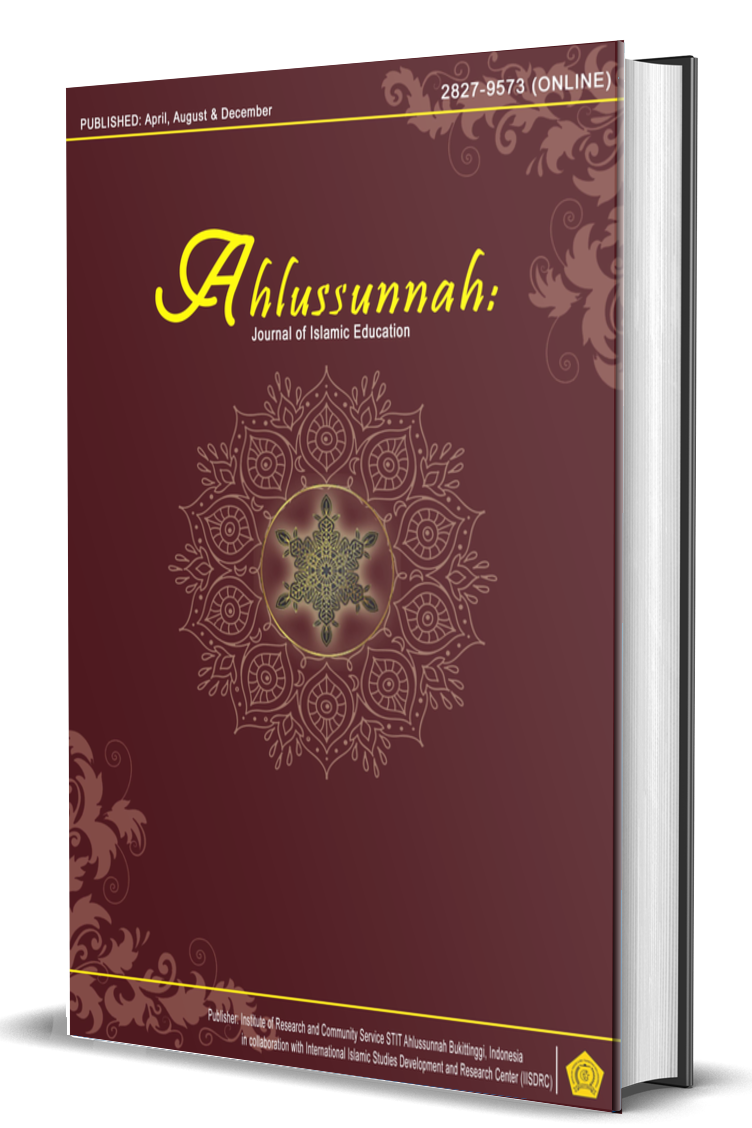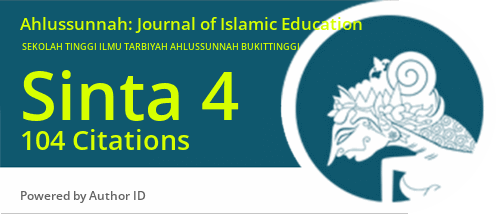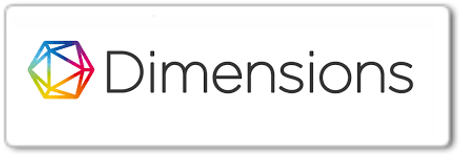Teacher Analysis Study According to Imam Al Ghazali in the Book of Al Adab Fi Al-Din
DOI:
https://doi.org/10.58485/jie.v1i2.177Keywords:
Ethics, teacher, Imam Al Ghazali, book Al-Adab Fi al-DinAbstract
Imam Al Ghazali is the only great Islamic scholar who is nick named Islamic document because of his enormous influence in various Islamic sciences, starting from theology, philosophy, jurisprudence, sufism and ethics. Regarding ethics, imam has a work that discusses it specifically, namely the book al-Adab fi al-Din. Among the ethics discussed in the book al-Adab fi al-Dinis teacher ethics. This research aims to analyze the ethics of a teacher according to Imam al-Ghazali. This research is descriptive research using the library method library research, this research approach uses a descriptive analysis approach, namely by collecting, compiling, and analyzing interpretations or interpretations in the book al-Adab fi al-Din chapter adab Muallimi al-Shibyanwhich discusses teacher ethics in teaching students. Data collection and data analysis were carried out by reviewing related books and books to obtain more accurate information. The research results show that the book al-Adab fi al-Din chapter Adab Muallimi al-Shibyan this work by Imam Al-Ghazali explains: First, teacher ethics according to Imam Ghazali in the book al-Adab fi al-Din bab Adab Muallimi ash-Shibyan consists of two concepts, namely; teacher personal ethics and teacher interaction ethics. Regarding teachers' personal ethics, Imam al-Ghazali put forward a keyword, namely improving oneself, because the aim of education is not only to make students smart but more than that, education is to make them true individuals and, a teacher can't make his students become righteous individuals if their own personalities are crooked. Meanwhile, regarding the ethics of teacher interaction, Imam al-Ghazali places great emphasis on three things, namely; objective, professional, andtawassuth, second, everything that Imam al-Ghazali explained regarding teachers' personal ethics and their ethics in interacting with students feels very current and relevant to the current conditions of education and educators, because what Imam Al Ghazali wrote are things that are universal and apply throughout time. What was problematic and problematic at that time, is also happening now, with the substance of the same problem, even though the context is different.
Downloads
References
Aagaard, J. (2015). Drawn to distraction: A qualitative study of off-task use of educational technology. Computers and Education, 87, 90–97. https://doi.org/10.1016/j.compedu.2015.03.010
Althuizen, N. (2017). Communicating a Key Benefit Claim Creatively and Effectively through Five Conveyor Properties. Psychology and Marketing, 34(1), 5–18. https://doi.org/10.1002/mar.20970
Ambrosi, A., Chee, S. Y., Khezri, B., Webster, R. D., Sofer, Z., & Pumera, M. (2012). Metallic Impurities in Graphenes Prepared from Graphite Can Dramatically Influence Their Properties. Angewandte Chemie, 124(2), 515–518. https://doi.org/10.1002/ange.201106917
Ardhy, F. (2018). Sistem Pengamblan Keputusan Pemilihan Bibit Jagung Dengan Metode Analytical Hierarchy Process (Ahp) Pada Toko Abadi Jaya Lampung Timur. Jurnal Informasi Dan Komputer, 6(2), 73–80. https://doi.org/10.35959/jik.v6i2.115
Arifin, Z. (2018). Al-Ghazali’s Thought of Islamic Education And it’s Relevance with the Modern Education. Khalifa: Journal of Islamic Education, 2(1), 1. https://doi.org/10.24036/kjie.v2i1.18
Biggs, J. (2012). What the student does: Teaching for enhanced learning. Higher Education Research and Development, 31(1), 39–55. https://doi.org/10.1080/07294360.2012.642839
Boell, S. K., & Cecez-Kecmanovic, D. (2014). A hermeneutic approach for conducting literature reviews and literature searches. Communications of the Association for Information Systems, 34(1), 257–286. https://doi.org/10.17705/1cais.03412
Borgman, C. L. (2012). The conundrum of sharing research data. Journal of the American Society for Information Science and Technology, 63(6), 1059–1078. https://doi.org/10.1002/asi.22634
Bratman, G. N., Hamilton, J. P., & Daily, G. C. (2012). The impacts of nature experience on human cognitive function and mental health. Annals of the New York Academy of Sciences, 1249(1), 118–136. https://doi.org/10.1111/j.1749-6632.2011.06400.x
Bryson, J. M., Crosby, B. C., & Stone, M. M. (2015). Designing and Implementing Cross-Sector Collaborations: Needed and Challenging. Public Administration Review, 75(5), 647–663. https://doi.org/10.1111/puar.12432
Cairns, K., Johnston, J., & Mackendrick, N. (2013). Feeding the “organic child”: Mothering through ethical consumption. Journal of Consumer Culture, 13(2), 97–118. https://doi.org/10.1177/1469540513480162
Chory, R. M., & Offstein, E. H. (2017). “Your Professor Will Know You as a Person”: Evaluating and Rethinking the Relational Boundaries Between Faculty and Students. Journal of Management Education, 41(1), 9–38. https://doi.org/10.1177/1052562916647986
Darnell, C., Gulliford, L., Kristjánsson, K., & Paris, P. (2019). Phronesis and the Knowledge-Action Gap in Moral Psychology and Moral Education: A New Synthesis? Human Development, 62(3), 101–129. https://doi.org/10.1159/000496136
Deandrea, D. C., Ellison, N. B., Larose, R., Steinfield, C., & Fiore, A. (2012). Serious social media: On the use of social media for improving students’ adjustment to college. Internet and Higher Education, 15(1), 15–23. https://doi.org/10.1016/j.iheduc.2011.05.009
Djafarova, E., & Rushworth, C. (2017). Exploring the credibility of online celebrities’ Instagram profiles in influencing the purchase decisions of young female users. Computers in Human Behavior, 68, 1–7. https://doi.org/10.1016/j.chb.2016.11.009
Echeverri, P., Salomonson, N., & Åberg, A. (2012). Dealing with customer misbehaviour: Employees’ tactics, practical judgement and implicit knowledge. Marketing Theory, 12(4), 427–449. https://doi.org/10.1177/1470593112457741
Fadhil, M. Y., & Sebgag, S. (2021). Sufi Approaches to Education: The Epistemology of Imam Al-Ghazali. Nazhruna: Jurnal Pendidikan Islam, 4(1), 91–107. https://doi.org/10.31538/nzh.v4i1.834
Fassin, D. (2012). A Companion to Moral Anthropology. A Companion to Moral Anthropology. https://doi.org/10.1002/9781118290620
Flook, L., Goldberg, S. B., Pinger, L., Bonus, K., & Davidson, R. J. (2013). Mindfulness for teachers: A pilot study to assess effects on stress, burnout, and teaching efficacy. Mind, Brain, and Education, 7(3), 182–195. https://doi.org/10.1111/mbe.12026
Giuliani, M., Petrick, R. P. A., Foster, M. E., Gaschler, A., Isard, A., Pateraki, M., & Sigalas, M. (2013). Comparing task-based and socially intelligent behaviour in a robot bartender. ICMI 2013 - Proceedings of the 2013 ACM International Conference on Multimodal Interaction, 263–270. https://doi.org/10.1145/2522848.2522869
Guala, F. (2012). Reciprocity: Weak or strong? What punishment experiments do (and do not) demonstrate. Behavioral and Brain Sciences, 35(1), 1–15. https://doi.org/10.1017/S0140525X11000069
Hamre, B., Hatfield, B., Pianta, R., & Jamil, F. (2014). Evidence for General and Domain-Specific Elements of Teacher-Child Interactions: Associations With Preschool Children’s Development. Child Development, 85(3), 1257–1274. https://doi.org/10.1111/cdev.12184
Hanna-E-kalbi, & Basharat, T. (2020). A comparative study of the personality traits of ghazali and freud. Journal of Islamic Thought and Civilization, 10(2), 223–242. https://doi.org/10.32350/jitc.102.13
Harris, A. M. (2019). Learning is Such Sweet Sorrow. International Review of Qualitative Research, 12(1), 5–16. https://doi.org/10.1525/irqr.2019.12.1.5
Hastuti, H. D., & Marsigit, M. (2020). Character Education Application in Thematic-Integrative Learning of Curriculum 2013. Formatif: Jurnal Ilmiah Pendidikan MIPA, 10(1). https://doi.org/10.30998/formatif.v10i1.4735
He, W., Zha, S., & Li, L. (2013). Social media competitive analysis and text mining: A case study in the pizza industry. International Journal of Information Management, 33(3), 464–472. https://doi.org/10.1016/j.ijinfomgt.2013.01.001
Howard, M. C. (2016). A Review of Exploratory Factor Analysis Decisions and Overview of Current Practices: What We Are Doing and How Can We Improve? International Journal of Human-Computer Interaction, 32(1), 51–62. https://doi.org/10.1080/10447318.2015.1087664
Ismail, I. (2016). Character Education Based on Religious Values: an Islamic Perspective. Ta’dib: Jurnal Pendidikan Islam, 21(1), 41–58. https://doi.org/10.19109/td.v21i1.744
Iverson, B. L., & Dervan, P. B. (2022). Activities and Learning Results of Islamic Education Through the Implementation of Cooperative Type Models Gallery Walk at Elementary School. 7823–7830. https://doi.org/https://doi.org/10.58485/jie.v1i1.91
Kamal, R. (2017). Internalization of Moderate Islamic Values in Education. Islamic Studies Journal for Social Transformation, 67. https://doi.org/10.28918/isjoust.v1i1.1142
Kiger, M. E., & Varpio, L. (2020). Thematic analysis of qualitative data: AMEE Guide No. 131. Medical Teacher, 42(8), 846–854. https://doi.org/10.1080/0142159X.2020.1755030
Kwan, M. P. (2012). The Uncertain Geographic Context Problem. Annals of the Association of American Geographers, 102(5), 958–968. https://doi.org/10.1080/00045608.2012.687349
LAWSON, H. A., CARINGI, J. C., GOTTFRIED, R., BRIDE, B. E., & HYDON, S. P. (2019). Educators’ Secondary Traumatic Stress, Children’s Trauma, and the Need for Trauma Literacy. Harvard Educational Review, 89(3), 421–447. https://doi.org/10.17763/1943-5045-89.3.421
Lesthaeghe, R. (2014). The second demographic transition: A concise overview of its development. Proceedings of the National Academy of Sciences of the United States of America, 111(51), 18112–18115. https://doi.org/10.1073/pnas.1420441111
Llamas-Nistal, M., Fernández-Iglesias, M. J., González-Tato, J., & Mikic-Fonte, F. A. (2013). Blended e-assessment: Migrating classical exams to the digital world. Computers and Education, 62, 72–87. https://doi.org/10.1016/j.compedu.2012.10.021
Maulidizen, A. (2019). Business Ethics: Analysis of al-Ghazali’s Economic Thought With Sufism Approach. Religia, 160–177. https://doi.org/10.28918/religia.v22i2.2067
Mittelstadt, B. D., Allo, P., Taddeo, M., Wachter, S., & Floridi, L. (2016). The ethics of algorithms: Mapping the debate. Big Data and Society, 3(2). https://doi.org/10.1177/2053951716679679
Moufahim, M. (2013). Religious gift giving: An ethnographic account of a Muslim pilgrimage. Marketing Theory, 13(4), 421–441. https://doi.org/10.1177/1470593113499698
Muhammad Ediyani. (2022). The History of Knowledge Development in East (Islam) and West. Islam Universalia: International Journal of Islamic Studies and Social Sciences, 3(3). https://doi.org/10.56613/islam-universalia.v3i3.206
Oosterveld-Vlug, M. G., Pasman, H. R. W., van Gennip, I. E., Muller, M. T., Willems, D. L., & Onwuteaka-Philipsen, B. D. (2014). Dignity and the factors that influence it according to nursing home residents: A qualitative interview study. Journal of Advanced Nursing, 70(1), 97–106. https://doi.org/10.1111/jan.12171
Reid Meloy, J., Hoffmann, J., Guldimann, A., & James, D. (2012). The Role of Warning Behaviors in Threat Assessment: An Exploration and Suggested Typology. Behavioral Sciences and the Law, 30(3), 256–279. https://doi.org/10.1002/bsl.999
Rubel, A., & Jones, K. M. L. (2016). Student privacy in learning analytics: An information ethics perspective. Information Society, 32(2), 143–159. https://doi.org/10.1080/01972243.2016.1130502
Russell, J. S. (2014). Is There a normatively distinctive concept of cheating in sport (or anywhere else)? Journal of the Philosophy of Sport, 41(3), 303–323. https://doi.org/10.1080/00948705.2013.832266
Sayem, M. A. (2021). Eco-Religious Teachings and Environmental Sustainability. Australian Journal of Islamic Studies, 6(3), 69–83. https://doi.org/10.55831/ajis.v6i3.357
Schünemann, H. J., Vist, G. E., Higgins, J. P. T., Santesso, N., Deeks, J. J., Glasziou, P., Akl, E. A., & Guyatt, G. H. (2019). Interpreting results and drawing conclusions. Cochrane Handbook for Systematic Reviews of Interventions, 403–431. https://doi.org/10.1002/9781119536604.ch15
Sugiana, A. (2019). Islamic Education Perspective Imam Al-Ghazali and Its Relevance With Education in Indonesia. Jurnal Tarbiyah, 26(1). https://doi.org/10.30829/tar.v26i1.400
Theodoridis, T., & Kraemer, J. (2022). Identification and Analysis of the Design Process of Character Education for Students in Islamic Boarding Schools. 7823–7830. https://doi.org/https://doi.org/10.58485/jie.v1i1.176
Tripp, T. R., & Rich, P. J. (2012). The influence of video analysis on the process of teacher change. Teaching and Teacher Education, 28(5), 728–739. https://doi.org/10.1016/j.tate.2012.01.011
vom Brocke, J., Simons, A., Riemer, K., Niehaves, B., Plattfaut, R., & Cleven, A. (2015). Standing on the shoulders of giants: Challenges and recommendations of literature search in information systems research. Communications of the Association for Information Systems, 37, 205–224. https://doi.org/10.17705/1cais.03709
Williamson, B., Eynon, R., & Potter, J. (2020). Pandemic politics, pedagogies and practices: digital technologies and distance education during the coronavirus emergency. Learning, Media and Technology, 45(2), 107–114. https://doi.org/10.1080/17439884.2020.1761641
Ylijoki, O. H., & Ursin, J. (2013). The construction of academic identity in the changes of Finnish higher education. Studies in Higher Education, 38(8), 1135–1149. https://doi.org/10.1080/03075079.2013.833036
Downloads
Published
How to Cite
Issue
Section
License
Copyright (c) 2022 Yosi Aryanti, Mutathahirin Mutathahirin, Ikhwan Rahman, Ridha Mulyani

This work is licensed under a Creative Commons Attribution-ShareAlike 4.0 International License.
Creative Commons Attribution 4.0 (CC BY)











